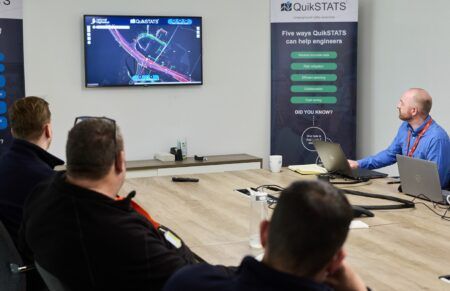The California Department of Transportation (Caltrans) has announced it will start to phase in elements of its I-80 SMART Corridor this week (commencing July 10), which will be the most sophisticated high-tech network of its kind in the state when it becomes fully operational in the autumn.
The project promises to change the way motorists drive on the highway, which carries as many as 270,000 vehicles per day and is one of the most congested routes in the state. Caltrans will be activating elements of the project gradually to allow motorists time to adjust to the new system. The most familiar elements will be introduced first, leading up to full activation of the system in August/September.
Representing one of the most sophisticated intelligent transportation systems (ITS) in the state, the SMART (Safety, Mobility and Automated Real-time Traffic Management) Corridor uses a network of integrated electronic signs, ramp meters and other state-of-the-art elements on a 20-mile (32km) stretch of westbound I-80 between the Carquinez Bridge and the Bay Bridge, in order to enhance motorist safety, improve travel time reliability and reduce accidents and associated congestion. The primary goal is to reduce the accident rate on this westbound stretch of I-80, as it is twice as high as the statewide average for comparable highways.
Real-time traffic information, such as variable speed signs and blocked lane signs, will allow drivers to make informed decisions in the event of an incident. Additional improvements include real-time ramp metering at 44 on-ramps to reduce merging conflicts and manage traffic volumes on I-80.
Once activated over the next few months, these ramp meters and real-time message signs along the corridor will contribute to optimized roadway operations and improved safety, and will be integrated with, and managed from, the Traffic Management Center (TMC) at the Caltrans Bay Area headquarters in Oakland. Drivers that need to detour due to problems on the I-80 are directed back on to the freeway once they have passed the incident, by electronic ‘Trailblazer’ signs on San Pablo Avenue and several other local arterial roads. The entire system relies on a network of roadway sensors and traffic cameras that will feed real-time information to the Oakland TMC.
Designed to reduce commuting times on the route between Richmond and Emeryville, the US$79m I-80 SMART Corridor Project was developed through a partnership between Caltrans, the Alameda County Transportation Commission (Alameda CTC), the Contra Costa Transportation Authority (CCTA) and the West Contra Costa County Transportation Advisory Committee (WCCTAC), in collaboration with transit agencies and nine municipalities along the corridor. The state has provided US$65m of the funding, with the CCTA and Alameda CTC’s half-cent sales tax contributing a further US$9m, and the remainder coming from federal and other sources.




